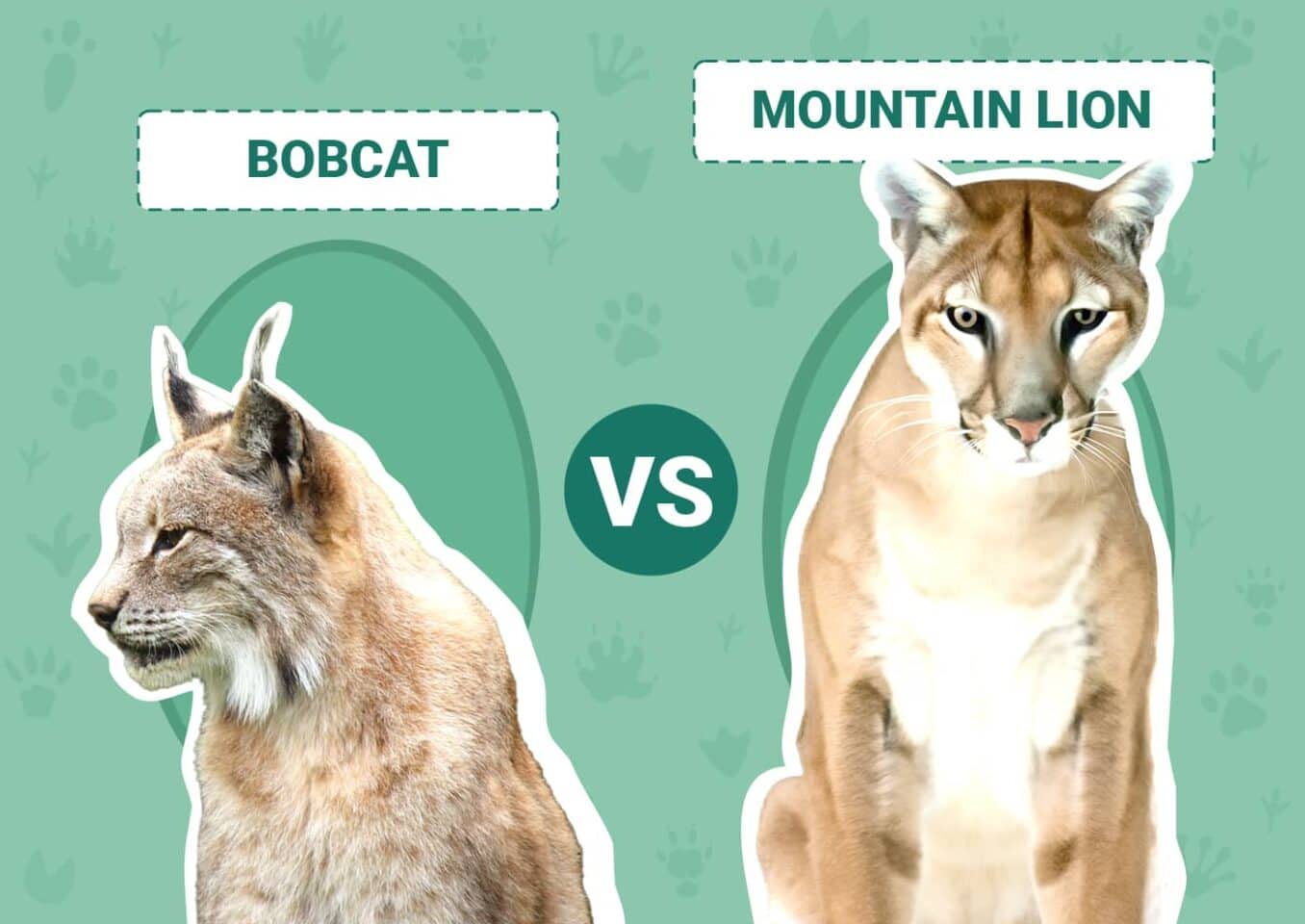Click to Skip Ahead: Bobcat Overview | Mountain Lion Overview | The Differences
Bobcats and mountain lions are the most common wild cats in the United States, and even though both can be hard to spot, many hikers and outdoorsmen get a chance to see one or the other at some point. Bobcats and mountain lions have a lot of overlap in range, and they have some similarities when it comes to behavior and prey as well. But these cats also have a lot of differences.
If you don’t know much about these two cat species, you might wonder what the differences are! Bobcats are small, spotted wild cats that are found all over the United States. On the other hand, mountain lions, also known as cougars or pumas, are much larger—the size of a large dog—and found mostly in the Western US.
If you want to know more about bobcats versus cougars, keep reading.

Visual Differences
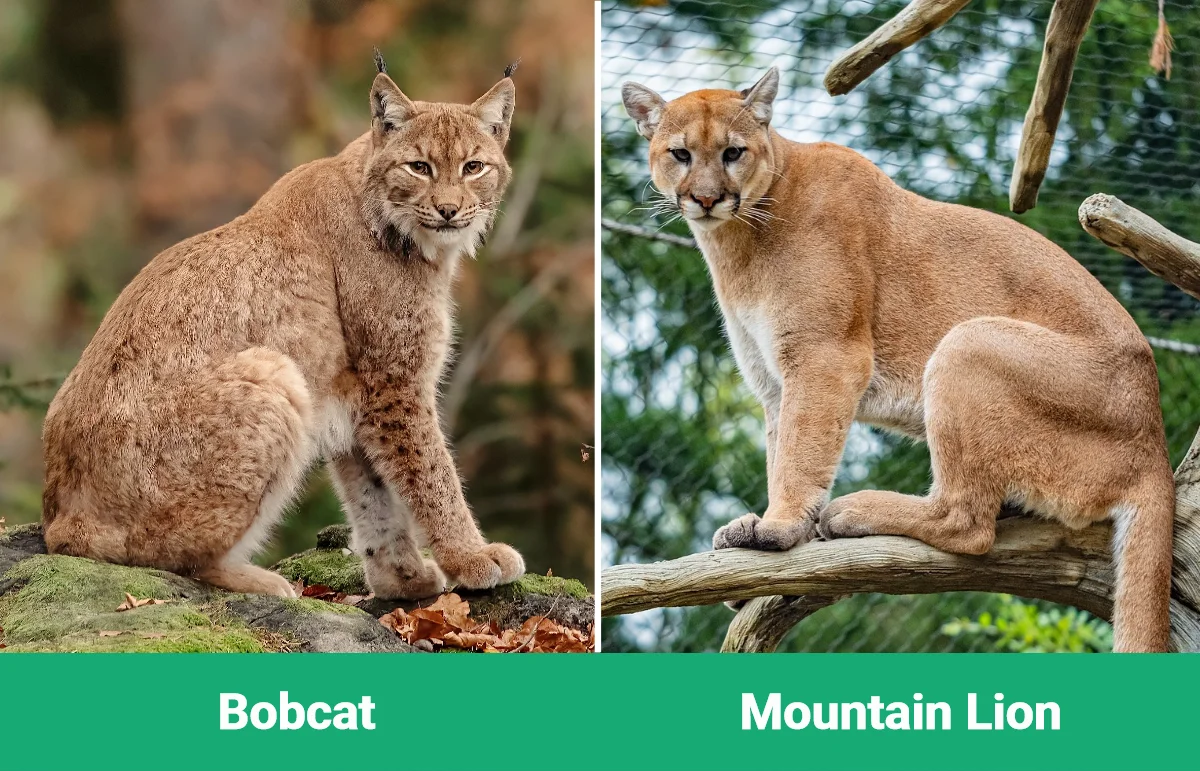
At a Glance
- Origin: North America
- Size: 15–30 lbs
- Lifespan: 5–8 years
- Domesticated? No
- Origin: North America
- Size: 90–175 lbs
- Lifespan: 7–15 years
- Domesticated? No

Bobcat Overview
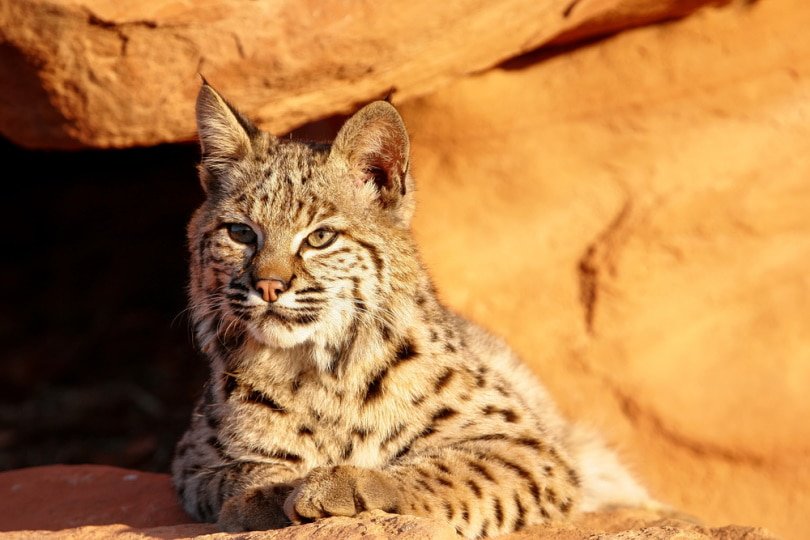
Characteristics & Appearance
If you catch a quick glimpse of a bobcat, you might mistake it for your neighbor’s pet kitty! Bobcats are wild cats, but they look very similar to a large domestic cat. They range in size from 15–30 pounds and 2–4 feet long—that means that at biggest they are two to three times the size of a cat. Bobcats have gray or grayish-tan fur that is covered in darker spots or speckles. This fur helps them blend into their environment easily. In areas with cold winters, bobcats develop a shaggy winter coat.
Bobcats are relatively stocky cats, with a distinctive tail. This tail is much shorter than a house cat’s or a cougar’s—only about six to ten inches long. They have pointed ears that may have small tufts, long legs, and large paws.
Behavior and Habitat
Bobcats are found in all 48 contiguous states of the United States. They live in a variety of habitats, from swampy wetlands to harsh deserts to mountainous forests. Bobcats are also known to encroach on suburban and urban areas, following smaller animals into neighborhoods and backyards. They are most active in the hours before dawn and after dusk, and their shyness around humans means that they are rarely seen—you might not know that one of these cats makes its home nearby if you aren’t lucky enough to see it.
Bobcats eat a wide variety of prey depending on territory and availability, but the bulk of their diet consists of small birds and mammals. Bobcat attacks on humans are virtually unknown and there are no recorded deaths via bobcat, but they can prey on smaller pets in some cases.
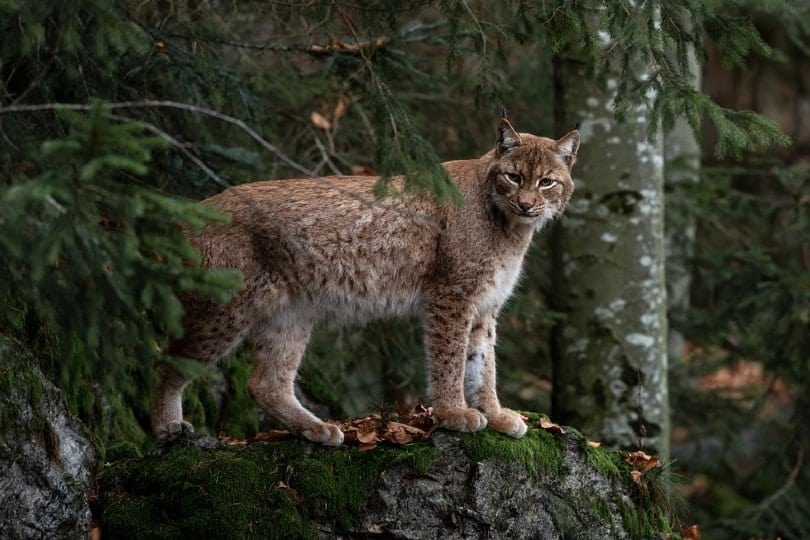

Mountain Lion Overview
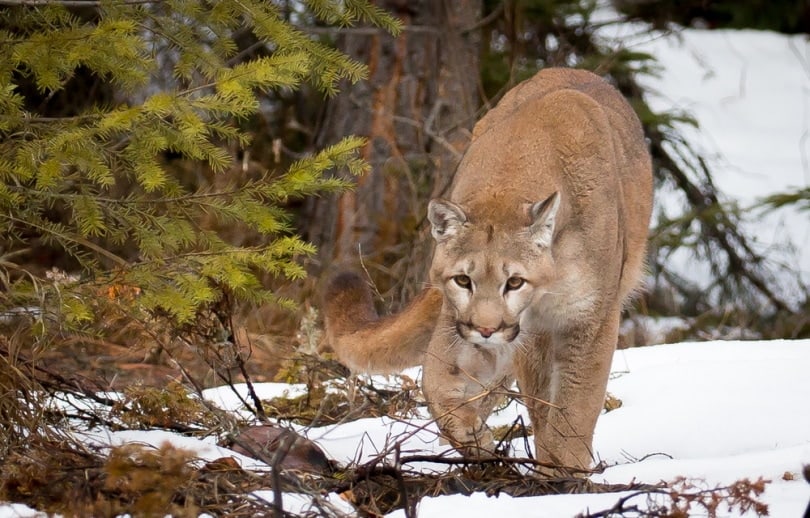
Characteristics & Appearance
Mountain lions have a large range of size, with females weighing in at about 90–105 pounds and males ranging from about 135–175 pounds. Their coats are almost entirely an even, tawny tan color similar to a lion’s or yellow lab’s fur, with lighter bellies and darker patches on the backs of their ears and tail. They have long, lean bodies that move gracefully.
Mountain lions also have long tails, sometimes nearly half of their body length. These tails often have a dark, nearly black tip. As the name suggests, their heads and faces look more like a lion’s than a cat’s, with round faces, large yellow eyes, and rounded ears, although mountain lions never have manes. Mountain lion cubs look similar to adult mountain lions, but they do have one big difference—unlike adults, cubs are born with dark spots and patterns that fade as they age.
Behavior & Habitat
Mountain lions are found in the Western United States, with the majority of the population living in or west of the Rocky Mountains. They once were found from coast to coast, but today the only significant population east of the Mississippi River is found in southern Florida. Mountain lions have large territories and can range very far; in recent years there have been several incidents of young male cougars traveling for hundreds or thousands of miles, including roaming far outside their normal range.
Mountain lions most commonly eat large prey such as elk and deer, but they will also eat smaller prey on occasion. Mountain lions also are known to prey on livestock and pets. They generally prefer to avoid areas populated by humans, but increasing habitat pressures can force these cats to live nearer to humans than either species would like. Attacks on humans by mountain lions are rare but dangerous, and occasional fatal attacks have been recorded.
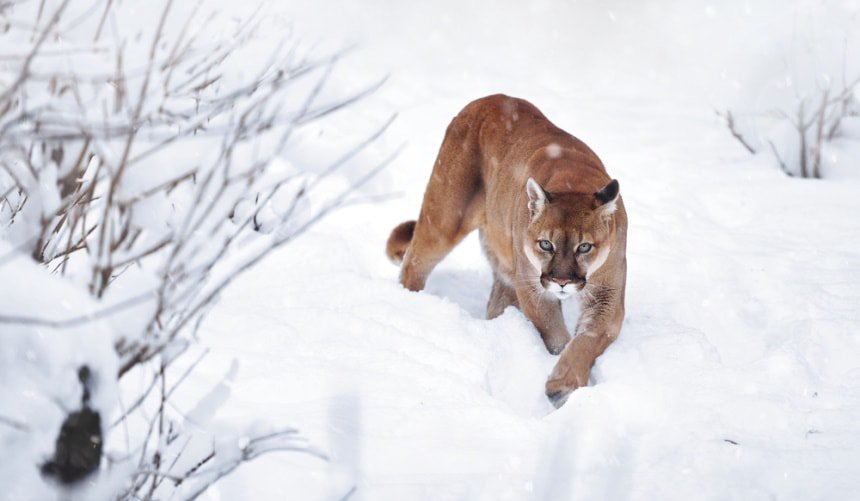

What Are the Differences Between Bobcats & Mountain Lions?
Appearance
Bobcats and mountain lions are distinguishable by size, with the mountain lion being several times larger. Adult mountain lions also have solid-colored coats. Bobcats are sometimes mistaken for mountain lion cubs, which are closer in size and have spotted markings, but these cats still have significant differences. Mountain lion cubs have rounded ears and long tails, while bobcats are recognizable for their short tails and pointed ears.
Range
Bobcats are found all over the United States, while cougars have a much smaller range. They are mainly found in the Western United States.
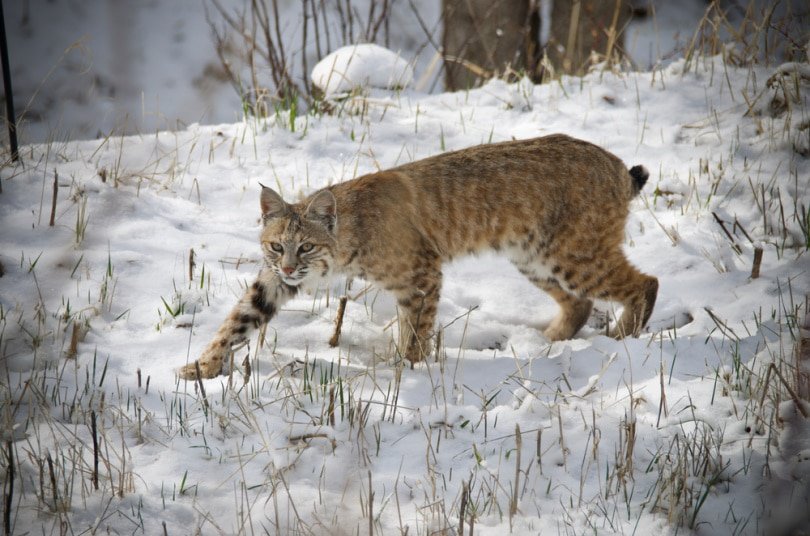
Prey
Although there is some overlap in prey, bobcats mostly eat small prey such as birds and small mammals. Mountain lions will also eat these if no other prey is available, but they prefer larger prey such as elk and deer.
Relationship to Humans
Although bobcats occasionally live in suburban and urban settings, attacks on humans are rare and fatal attacks are unheard of. Mountain lions are much more dangerous; although they don’t attack humans often, they do occur and fatal attacks do happen occasionally. Both bobcats and mountain lions are known to attack pets and livestock, but mountain lions are able to attack pets of all sizes while bobcats will mainly go after smaller pets and livestock.

Which Species Did You See?
If you saw a wild cat at a distance, it can be hard to know which one you really saw. But there are some pretty big differences to help you figure it out. First, consider what is more likely in the area you’re in. A cougar sighting in the Eastern United States or a busy suburban neighborhood isn’t impossible, but it’s much more likely to be a case of mistaken identity. On the other hand, if you’re hiking in a remote area in the Western United States, both are plausible.
Also consider physical characteristics. Mountain lions are much larger and have solid tan coats, whereas bobcats are smaller and spotted. If you only saw a silhouette, a mountain lion is distinguishable by its round ears and long tail. That same silhouette will also help you be certain whether you saw a young cougar or a bobcat. Overall, these small differences can usually help you to make an accurate determination.
Featured Image Credit: Top – Don Mammoser, Shutterstock | Bottom – NickyPe, Pixabay
